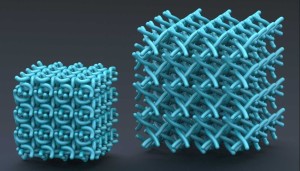Research into skin that holds water

Physicists reconstruct how wrinkly skin returns to smooth using a computer model
We all know the phenomenon of wrinkly fingers after a bath. If we spend longer periods in the water, our skin absorbs moisture and the cells of the outer skin layer begin to swell. Once in a dry environment, the skin gives off the additional water without sustaining any lasting damage and returns to smooth within a short time. Researchers have now been able to show how this is possible using a physical model: FAU physicist Dr. Myfanwy Evans and Professor Roland Roth from the Institute for Theoretical Physics at the University of Tübingen modelled the structure of the outer skin layer on the mesoscopic scale for the first time. Their results were recently published in the journal Physical Review Letters.
Our skin is a complex organ with many different functions. The outer skin layer, known as epidermis, consists of dead skin cells but fulfils key functions: for instance, it protects our body from loss of moisture in dry environments and from absorbing too much water when we bathe.
Using a computer model, the scientists calculated the processes that take place in the individual components of the skin when it absorbs water and observed an interesting interplay of forces in the outermost skin cells. The outermost layer of skin contains keratin filaments in a geometrically ordered structure. Keratin is hydrophilic, meaning it feels very at home in an aquatic environment, which explains why skin cells absorb water. If the cells swell in the process, the keratin filaments are stretched, which in turn costs elastic energy much like in a coil spring that is pulled.
This interplay of forces acting in opposite directions brings the expansion of the cells to a halt and ensures that the skin only absorbs a limited amount of water. The expansion stops before the keratin filaments touch each other and can become permanently interlinked, which would result in a permanent change of the cells’ mechanical properties. This means that our skin can give off the water it absorbed and return to a smooth state without taking any damage.
The study could help to develop a better understanding of and treatments for skin diseases and synthetic materials based on the properties of skin.
Further information:
Dr. Myfanwy Evans
FAU
myfanwy.e.evans@physik.uni-erlangen.de
Prof. Dr. Roland Roth
Universität Tübingen
Phone: +49 (0)7071 29 76380
roland.roth@uni-tuebingen.de